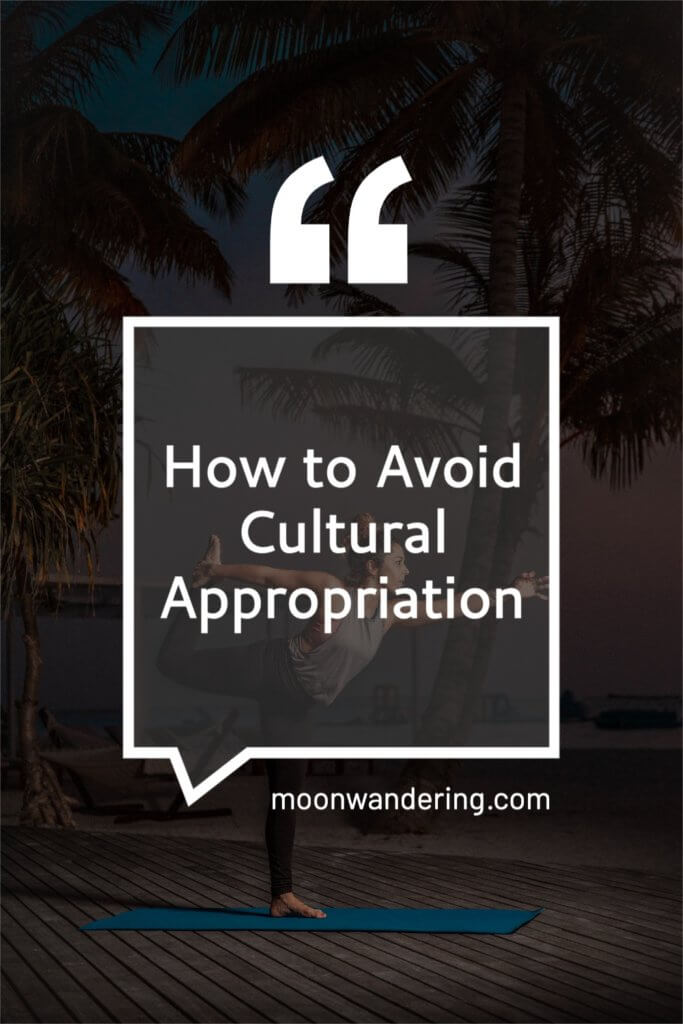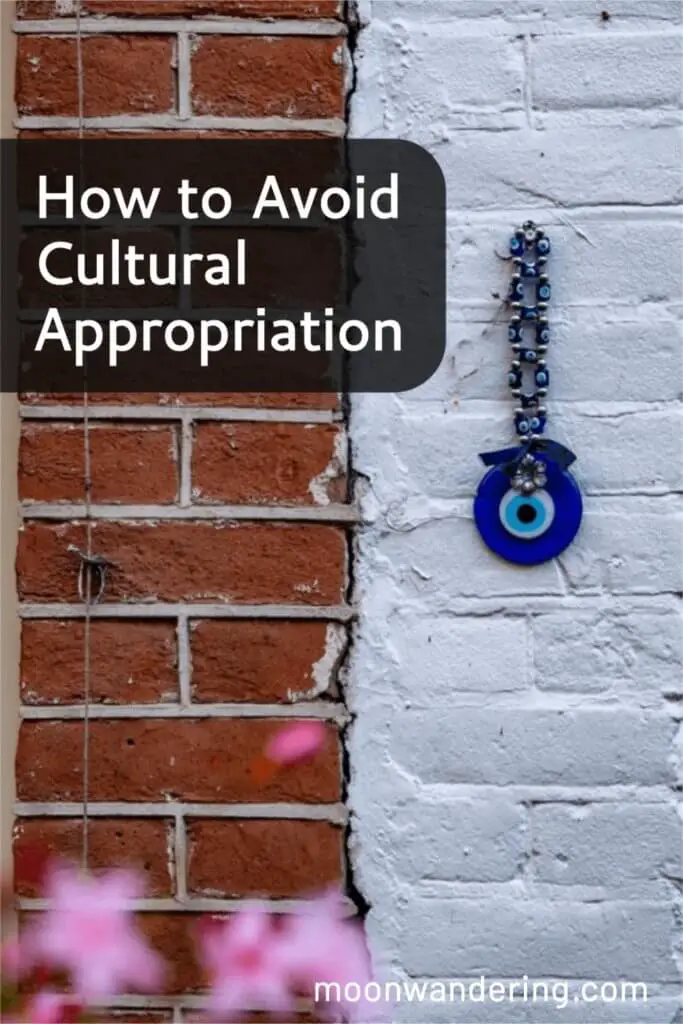Hey Moonbeam
I'm Whitney!
Seeker and Wanderer. Bringing together wanderlust and the magic of yoga and meditation.
Let's connect.
Top Posts
Self-Care in Cappadocia
#1
9 tips to maintain yoga practice while traveling
#2
5 minute full moon rituals
#3
da lat travel guide
#4
Sharing is caring!
Throughout my travels, I have always put an emphasis on truly learning about the local culture and traditions. Travel is an amazing tool to help you to expand your mindset, see different ways of living, and use that information to create a more well-rounded life. But, with the history of Western culture’s dominance over other cultures through colonialism, there are some pretty hard questions we have to ask ourselves when we are learning about other cultures.
- Is my adaptation of this cultural practice honoring its traditions?
- Do I understand enough about ___ to wear it, practice it, etc. with dignity?
- What is the reason behind why I want to adapt this other cultures traditions as my own?
- What impact will this have on the people who originate from this culture?
By now, you have probably heard of cultural appropriation, and I am so delighted that you are educating yourself on it and its effects, so that we can collectively make better choices in the future. To help you in this, let’s start off with the basics.

Put as simply as possible, cultural appropriation is taking the objects or practices of another culture on as your own, without the knowledge of the significance or without crediting the culture as the source of this object or practice.
An example of this could be wearing Native American headdresses as a costume when you have no ties to Native American culture. One that’s seen often in popular culture is use of the evil eye symbol (the nazar) in fast fashion, or using Buddha statues to decorate when you don’t actually practice Buddhism.
This behavior is dangerous, as it can perpetuate harmful and untrue stereotypes, as well as colonialism, and oppression. As many of the groups whose culture is appropriated also tend to be marginalized communities, taking the parts of their culture that suits mainstream Western culture without any of the deep, cultural context, while also expecting those groups to assimilate fully to Western culture, is extremely damaging.

This isn’t to say that everything that isn’t from your culture is off limits, but it does call on everyone to be more mindful about the practices and objects they adopt into their lives. You can participate in a culture without appropriating it, and here is the difference between the two:
Participating involves learning and true understanding before adopting. For example, on my trip to Cappadocia, I saw the evil eye symbol all over the place and was so tempted to buy something with it on it, because I was completely mesmerized by it! But, I knew that I didn’t know the significance behind it, and wearing it without understanding its origins didn’t feel right. So before deciding to wear one, I did my research. And let me tell you, it is so much more meaningful to me now.
A good rule of thumb to know if you are participating or appropriating is to ask yourself: “If someone from this culture saw me wearing/doing this, would I be able to tell them why without guilt?”. If the answer is no, then you probably have a little more work to do.
Another way to see if you are crossing the line, is if someone from the original culture cannot use the item or participate in the practice without prejudice in your culture. This can include, but is not limited to, wearing a head covering, hijab, a bindi, or even wearing dreadlocks without having any connection to the cultures where these items traditionally originate from.
Appropriation can also look like “simplifying” someone else’s culture to make it fit better into yours. This happens a lot with yoga! Traditional symbols are non-existent, Sanskrit pose names are often replaced with English ones, and spirituality is often removed from the practice, even though it was developed in Sanskrit as a spiritual practice for self-realization and healing.
Another phrase you may come across while doing your research is “closed” practices or cultures. A closed practice or closed community simply means that the practice is not open for people outside of the group to use or participate in.
For example, because only people within tribes have access to the knowledge behind what traditionally goes into smudging, in order to be able to be educated enough to adopt smudging, you would have to be part of a Native American tribe that practices it. Since it is something one is born into, smudging is considered to be a closed practice.
Cultures and practices aren’t always considered “closed” simply because they don’t want other people to use them, there are a large variety of reasons why it may be so. Sometimes, only true understanding can come from living in the region where it originated, or from traditions a person learns from being born into a specific culture.
One of the most important things we can do is to continually educate ourselves. Learning about what cultural appropriation is, what it means, what it looks like, and what effects it has on the communities the culture is being taken from. But also educating ourselves any time we want to adopt another culture’s practices as our own. With education, we can make better and more informed choices, gain valuable perspective, as well as respect for the cultures we seek to honor.
If you do decide to incorporate some Turkish rugs, lamps, or evil eye decor into your lifestyle, consider checking out this collection of Turkish Gifts on Etsy.
In what ways do you honor the cultures you travel to? Comment below or follow me on Instagram to stay in touch.
Don’t forget to pin!



